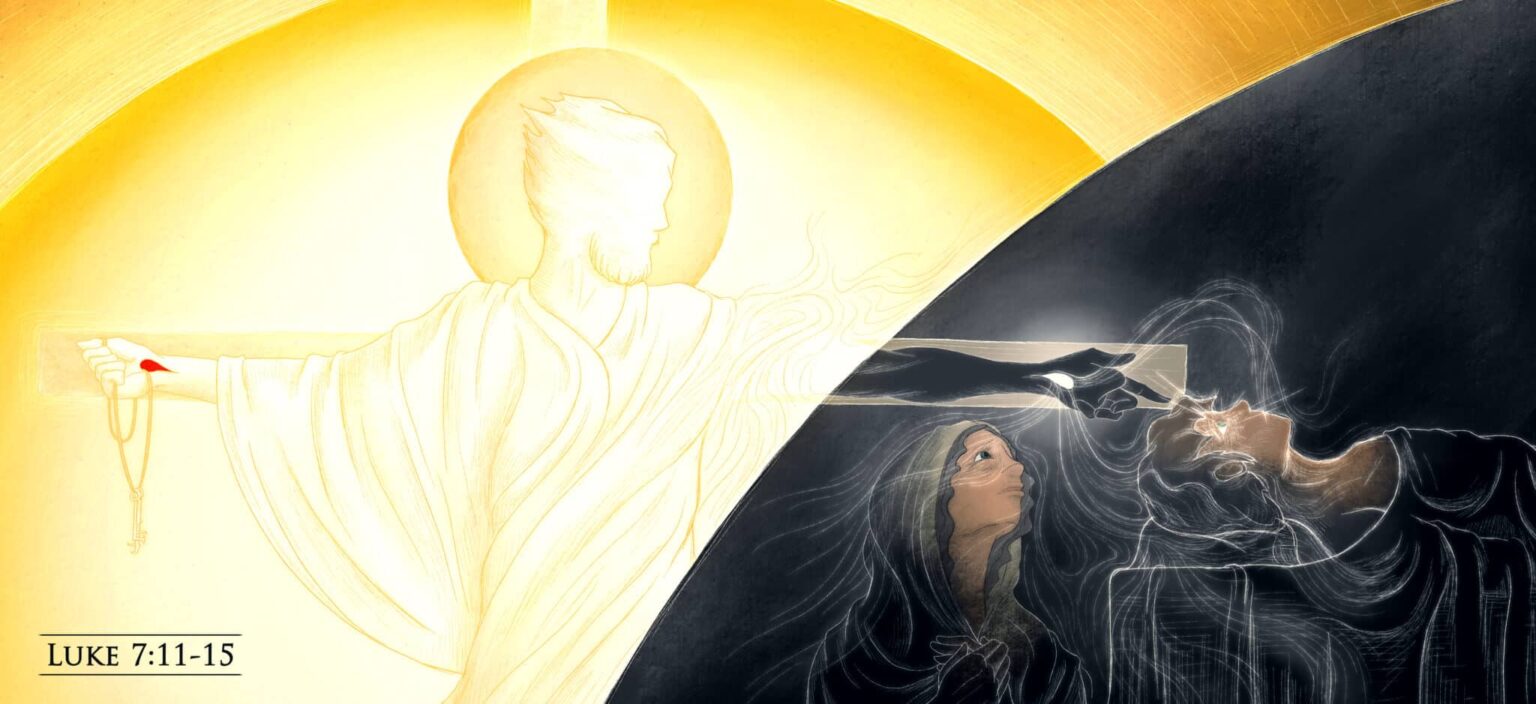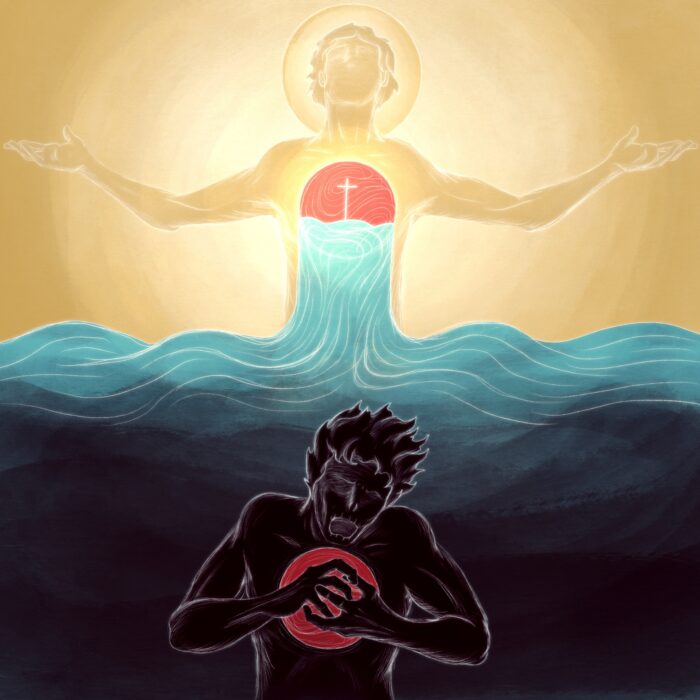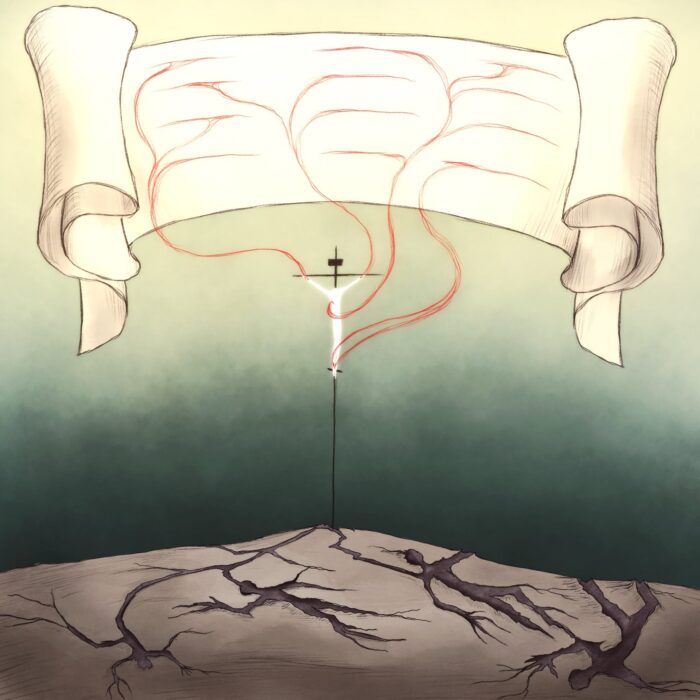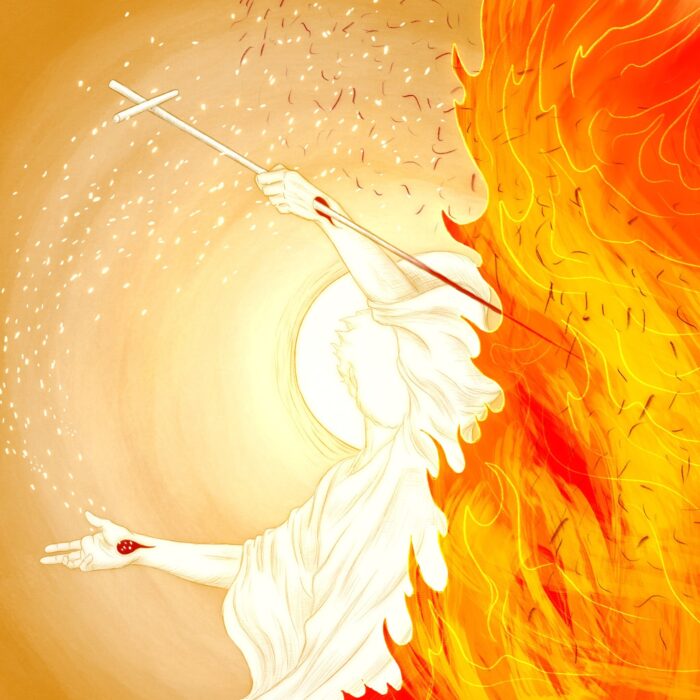
Luke 7:13-15, “And when the Lord saw her, he had compassion on her and said to her, “Do not weep.” Then He came up and touched the bier, and the bearers stood still. And He said, “Young man, I say to you, arise.” And the dead man sat up…”
The first things to notice in this image are the two circular shapes that dominate the frame. On the right is a dark semi-circle representing the stone rolled away from Christ’s tomb (and therefore representing death which is “rolled away” by His resurrection), while the golden semi-circle on the left represents the opened tomb (and therefore the indomitable life of the risen Son). The widow and her son are in the darkness signifying their bondage to death, however Christ—the Author of Life (Acts 3:15)—reaches into death and gives life.
In Luke’s account, Jesus has—of course—not yet been crucified or raised from the dead. However, this image attempts to express that the raising of the widow’s son was eternally rooted in Jesus’ own victory over death through His crucifixion and resurrection. There would be no little “r” resurrections (either temporary, as with the widow’s son who would eventually die again, or lasting, as with the resurrection of the just in the last day) if there was not a singular Resurrection standing as a fountainhead of Life at the heart of history (Hebrews 2:14, Revelation 1:18, etc.). For this reason I depicted Christ as Himself raised from the dead, holding the keys of death and hades, reaching back into conquered death—as it were—to impart His victory over death to the young man.
Notice also that the hand with which Christ restores life to the child is crucified on a cross beam. In order for the Author of Life to entire into our plight and impart His life to us (not only physical life, as in this instance, but—more foundationally—spiritual life), in order for Christ to impart His life to us, He must first swallow up death in our place on the tree (Isaiah 25:7-8, Hebrews 2:9-14). Death relinquished the young man in this story only because the hand on the bier (v.14) would eventually be the hand on the cross.
Luke’s text does not tell us what the long-term result of this miracle was on the boy and his mother, however, in this image I pictured them as both being eternally impacted by what happened. The life flowing from Christ’s wounded hand not only brings the boy back from the dead but also—as represented by the wide-open eyes—grants him and his mother the eyes of faith with which they can see through the miracle, as it were, and perceive the glory of God in Christ (this is the function of miracles, especially in John’s gospel, John 5:36, 6:26-27, etc).
Finally, notice that the risen Jesus is cruciform in posture. This is because, even as the Resurrected Lord, the Son of God does not cease to be the one whom we meet at the cross. In fact, the definitive communication of the Son’s identity—and, therefore, of the Father’s glory—comes to us, not at the resurrection, but at the cross (John 13:31-32, 17:1-5, etc.). To be sure, the communication of God’s glory at Calvary cannot be received apart from the resurrection (since, without the resurrection, the cross is only horror, 1 Corinthians 15:14-19). However the focal point of our faith is the crucifixion. Here we know both the weight (in the horror of just sin’s punishment) and the wonder (in that the one bearing the punishment for us is our Lord Himself) of God’s Name. This is why, for all eternity, the beauty of the One True God will shine on us through the slain and risen Lamb (Revelation 22:1-4).




